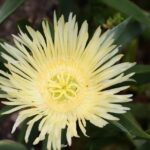Anxiety and stress are probably two of the most extended conditions in today’s world and there are many prescription medicines in the market to treat them. But, many people don’t want to rely on prescription drugs to alleviate these conditions due to the side effects that they can carry. That’s why many are seeking natural alternatives to help ease mild anxiety and symptoms of stress.
Nowadays, we can find several plants and substances in the market that have calming and soothing effects. Traditionally, chamomile tea, passionflower and valerian root have been used to ease anxiety and stress symptoms. But you can also find various less-known plants that can help you relax, for example kratom, mitragyna hirsuta, kava and kanna. This article is dedicated to the latter.
As we’ve said, people typically use kanna to relax and ease anxiety. But what are the traditional uses of kanna? And, most importantly, how can you use kanna today? Discover kanna throughout history below!
What Is Kanna?
Kanna, or sceletium tortuosum, is a plant of the aizoaceae or Ice Plant family. Due to its cultivation and its care, it is believed to be related to the cactae family. The kanna plant is a small creeping bush, and both its roots and its leaves have amazing properties. Traditionally, the way to enjoy kanna roots is by chewing or smoking them. On the other hand, some users brew its leaves into a tea.
The plant contains four main alkaloids: mesembrine, mesembrone, mesembrenol and tortuisamine. These alkaloids are responsible for kanna’s properties. Particularly, mesembrine is the alkaloid that gives the plant its soothing and relaxing properties as it acts as a serotonin reuptake inhibitor. Thanks to this alkaloid, kanna has similar properties as those of SSRI drugs that doctors prescribe to treat anxiety. But also, it’s because of these properties that you should never mix SSRI medications with kanna, as both together can increase the risk of developing serotonin syndrome.
Kanna Throughout History: Where Does Kanna Come From?
The kanna plant is native to South Africa. The indigenous cultures of this country have traditionally used this plant thanks to its many properties, especially to boost their mood and as a discomfort reliever. Later – more than three centuries ago – the Dutch explorers discovered the properties of the plant.
The kanna plant used to grow widely in the Western Cape province of South Africa. In fact, this region was known as Kannaland. Also, the plant used to grow in other parts of South Africa, including the dry areas of Western, Eastern and Northern Cape. But environmental conditions, as well as overharvesting have put kanna in danger and today it is difficult to see kanna growing naturally in its natural habitat.
Although there have been efforts to cultivate sceletium tortuosum in other countries, this doesn’t seem to work, as the plant only grows well in certain soil types and under certain temperature conditions. Nowadays, kanna is cultivated in nurseries under controlled conditions.
Kanna Throughout History: Traditional Uses of Kanna
Since ancient times, the Hottentots and Bushmen tribes of South Africa traditionally associated the eland antelope with kanna. In fact, both tribes named this animal, sacred to them, “kanna”. These ancient tribes used to chew and smoke kanna in their ritual ceremonies.
The Bushmen tribe (currently known as San) also used kanna as an analgesic in tooth extractions. Also, the tribes from the areas where kanna is from used it as a general analgesic, to treat children’s cholic and to help alcoholics quit their addiction.
Modern Uses of Kanna
Today, people mainly use kanna to enjoy its relaxing properties as well as to get a boost of energy and to achieve a sense of euphoria. But sceletium tortuosum is also effective to ease pain and muscle tension. Probably, the most important use of kanna is as a natural anxiety reliever and as an antidepressant.
So, how can it be that the plant is euphoric and relaxing at the same time? Basically, this depends on the dosage. Like other substances, such as kratom or mitragyna hirsuta, kanna has different properties depending on the dose. At small dosage, kanna has stress relieving and antianxiety effects, whilst at moderate doses its properties are more euphoric and energizing. When taking large doses of kanna, users report that the effects are more sedative and tranquilizing.
Today you can find two formats of kanna in the market: fermented and unfermented. Users report that fermented kanna effects are somehow stronger than those of unfermented kanna. Also, the side effects of fermented kanna are less potent than those of unfermented kanna.



